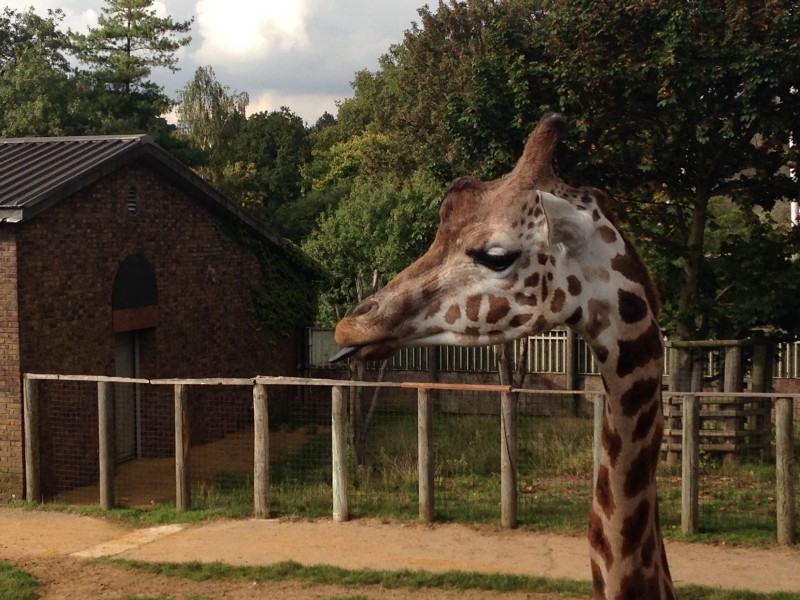

Founded in 1828, London Zoo is the oldest scientific zoo in the world. But it can be a challenge to keep up with the pace of change in the rest of the world.
“The zoo is a wonderful place, and we’re trying to bring a bit more technology into it,” Robin Freeman tells me as he sets up for the latest in a series of Conservation Hackathons organized in collaboration with Claire Asher of the Centre for Biodiversity and Environment Research at University College London.
Their challenge today is to work with the Red List, a system for classifying extinction risk. Freeman explains, as he briefs the hack day’s participants, that it’s the 50th anniversary of the Red List this year. It used to be published simply as a series of red books. Today, it’s online, but it could be a bit more dynamic.
We’re sitting in an education room, just past the parrots, before you get to the lions. It’s a slightly rainy Saturday and visitors walk by on the way to the zoo’s B.U.G.S. exhibit. There are conservationists–several from Kew Gardens bringing an interest in plants to the zoo’s focus on animals–as well as people with expertise in programming and software development. Interestingly, some of the people on the “techies” side are scientists too, but in physics. They use programming a lot in their everyday work, and wonder if they might help apply these skills to other areas of research.
“I feel a bit like an exhibit,” laughs one of the participants slightly uncomfortably, as a group of kids peeks in at us. “Come look at the nerds!”
Narrowly side-stepping too many puns about bugs and Python–computer bugs, not the creepy crawlies; Python the language, not a resident of the zoo’s famous reptile house–coffee cups are refilled and data sets are downloaded. “The idea came out of conversations we were having about trying to engage the technical community with conservation problems,” Freeman explains.
It’s winter so the zoo closes at 4 p.m., but by the end of the event someone’s already written a script that pulls out the scientific name of a species and puts its common name next to it. No need to know what a Vulpes Lagopus is–the program can tell you it’s an Arctic Fox. Other ideas emerged too, including several map-based ones: color-coded countries by the number of endangered species, as well as by what sort of threat (e.g., climate change, habitat file). Participants even experimented with using different ways of showing the globe on a computer, rather than sticking to the standard Mercator projection.
But as everyone packs up and moves to the pub, the real impact of the day may happen later. Asher and Freeman hope the hackathons will generate new approaches to data analysis, visualization and synthesis. But really, the first step is getting the right people to interact with each other. You want to leave a hackathon having made something, but sometimes the more long-standing impact is getting experts to share skills and make contacts, so larger projects can follow later.
“I think they [conservation hackathons] are growing,” Freeman adds, referring to a slew of similar projects in the United Kingdom and the United States. He would like to take the events to other towns. Cambridge, for example, has an especially powerful mix of expertise that he and Asher could help connect. They have funds to do two more events, and know people who are keen to do a “Hack the Living Planet” event, looking at the World Wildlife Fund’s research which recently made news around the world with reports that wildlife has declined by 52 percent since 1970.
Freeman likes the London Zoo as a site though and wonders, seeing as they already host sleepovers for kids, why not do an overnight hackathon there? He also mentions colleagues working with Raspberry Pi Foundation. “So on another horizon is the idea of a hardware hack as well,” he adds. “Doing a hardware hack in the zoo would be amazing.” 3D-printed camera traps anyone?


How We Get To Next was a magazine that explored the future of science, technology, and culture from 2014 to 2019. This article is part of our Design & Innovation section, which looks at new devices, concepts, and inventions that are changing our world. Click the logo to read more.
